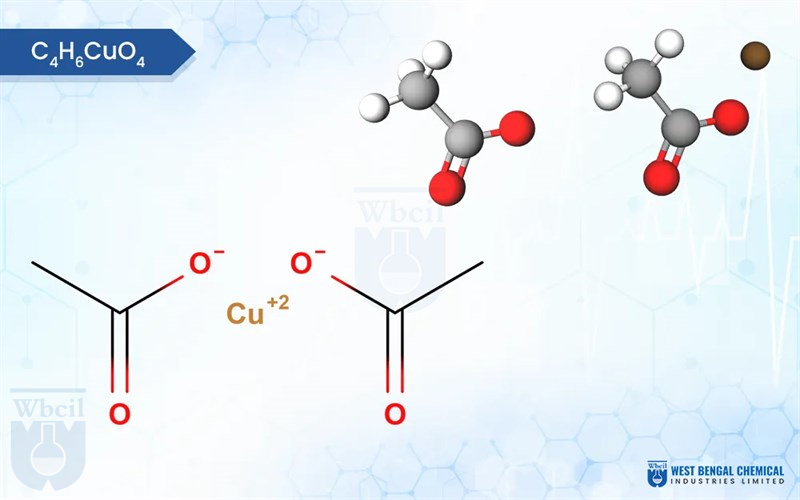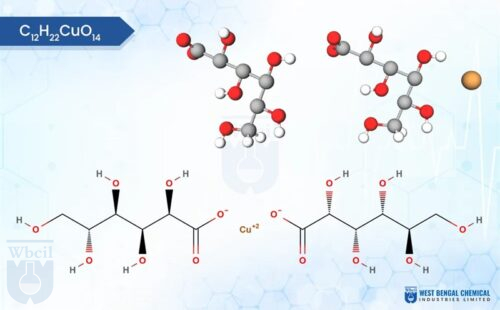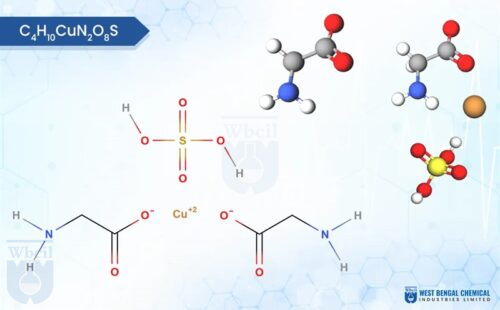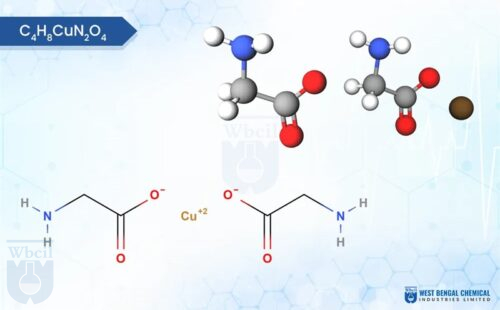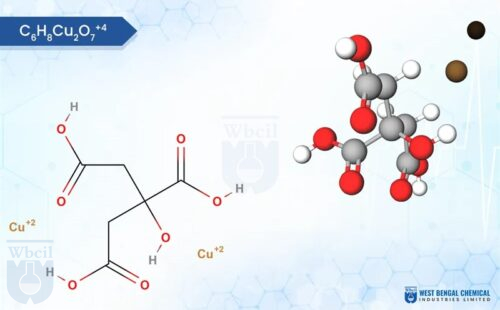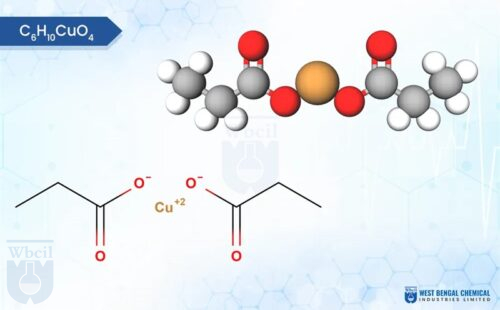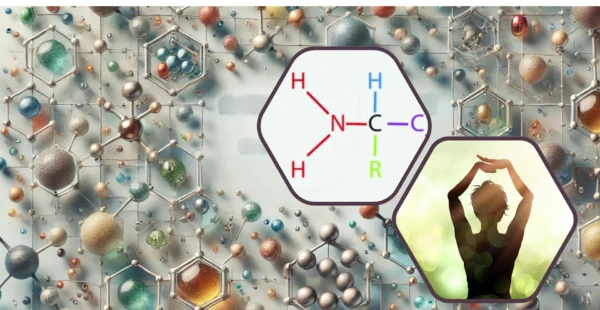Copper Acetate
-
Product Name:
Copper Acetate
-
Molecular Formula:
C4H6CuO4
-
Molecular Weight:
181.63 g/mol
-
CAS No.:
142-71-2
-
HSN Code:
29152990
-
CID Code:
8895
-
Shelf Life:
3 years - 20°C powder
-
ChemSpider ID
8555
-
UNII No.
39M11XPH03
- USP
- IUPAC Names
- Synonyms
USP of Copper Acetate
- Copper acetate serves as a catalyst in various organic reactions, particularly in the synthesis of complex molecules.
- In marine environments, copper acetate is used as an anti-fouling agent to prevent the growth of algae and other marine organisms on the hulls of ships and boats.
IUPAC Names of Copper Acetate
Tetra-μ2-acetatodiaquadicopper(II)
Synonyms of Copper Acetate
- Copper(II) acetate
- Cupric Acetate
- copper(II) acetate monohydrate
- Copper acetate
- Copper diacetate
- Cupric diacetate
- Crystals of venus
- Cupric acetate,anhydrous
- Copper(II)acetate
- Crystallized verdigris
- Copper(2+) acetate
- Copper(2+) diacetate
- copper (II) acetate
- Acetic acid, copper(2+) salt
- copper;diacetate
- Copper acetate (Cu(C2H3O2)2)
- Copper acetate (Cu(OAc)2)
- Acetic acid copper(2+) salt
- Copper(II) Acetate, Anhydrous
- Acetic acid, copper(2+) salt, basic
- Acetic acid, copper(II) salt (2:1)
- Acetic acid, copper(2+) salt (2:1)
- copper(II)-acetate
- Copper di(acetate)
- Acetic acid, cupric salt
- Acetate de cuivre
- Cu(II) acetate
- Cupric acetate, basic
- Cupric Acetate Anhydrous
- diacetoxycopper
- Bisacetoxycopper
- UNII-39M11XPH03
- diacetoxy copper
- Acetic acid, copper (2+) salt
- copper acetate salt
- Cuprum Aceticum 3
- copper(II)diacetate
- copper (II)acetate
- copper-(II)acetate
- copper(1I) acetate
- copper(11) acetate
- copper(II) diacetate
- copper-(II) acetate
- copper-(II)-acetate
- copper (II) diacetate
- diacetoxy copper (II)
- Acetic acid,copper salt
- Cu(OAc)2
- Acetic Acid Copper(II) Salt
- Copper,bis(acetato-ko,ko’)-
- copper(2+) bis(acetate ion)
- Copper(II) acetate, Trace metals grade
- Copper Acetate (Cu(C2H3O2)2); Copper Acetate (Cu(MeCO2)2);
- Copper acetate (Cu(OAc)2); Acetic Acid Cupric Salt; Copper Acetate;
- Copper Diacetate; Copper(2+) Acetate; Copper(2+) Diacetate; Copper(II) Acetate;
- Crystallized Verdigris; Crystals of Venus; Cupric Acetate; Cupric Diacetate;

If you are interested on Copper Acetate, then
Description of Copper Acetate
Copper (II) acetate is also referred to as cupric acetate, is the chemical compound with the formula Cu(OAc)2
If you are interested on Copper Acetate, then
Application of Copper Acetate
- Used as a fungicide to control and prevent fungal diseases in crops such as apple scab, peach leaf curl, and downy mildew.
- Works by inhibiting the growth and reproduction of fungal spores
Related Products
If you are interested on Copper Acetate, then
Related Blogs of Copper Acetate

Imagine a vibrant mosaic, where each tile, meticulously chosen and placed, contributes to a breath-taking masterpiece. In the intricate mosaic…...

Aging is more than just the appearance of wrinkles and gray hair—it’s a multidimensional process that impacts our physical health,…...

In the intricate ballet of livestock nutrition, where every element plays a pivotal role in the animal's well-being and productivity,…...

In today’s world, our bodies constantly encounter toxins—whether from environmental pollution, processed foods, stress, or negative emotions. Over time, these…...

In the intricate tapestry of nature, fruit development is a delicate interplay of genetics, environment, and nutrition [1]. While the…...

What is Fine Chemicals? Fine chemicals are complex, single, pure chemical substances produced in limited quantities using specialized processes. They…...

Pidolic acid, also known as 5-oxoproline or L-pyroglutamic acid, is a naturally occurring amino acid derivative found in various tissues…...

What is Happiness Blueprint? In the pursuit of happiness, most of us look outward—toward relationships, success, or self-help routines. But…...

The importance of mineral chelates (nutrients) cannot be exaggerated. Factually, these nutrients are necessary for plant growth, development, and overall…...

At the intersection of science and ancient wisdom lies a profound connection: nutraceuticals and the 7 chakras. The chakras, energy…...

